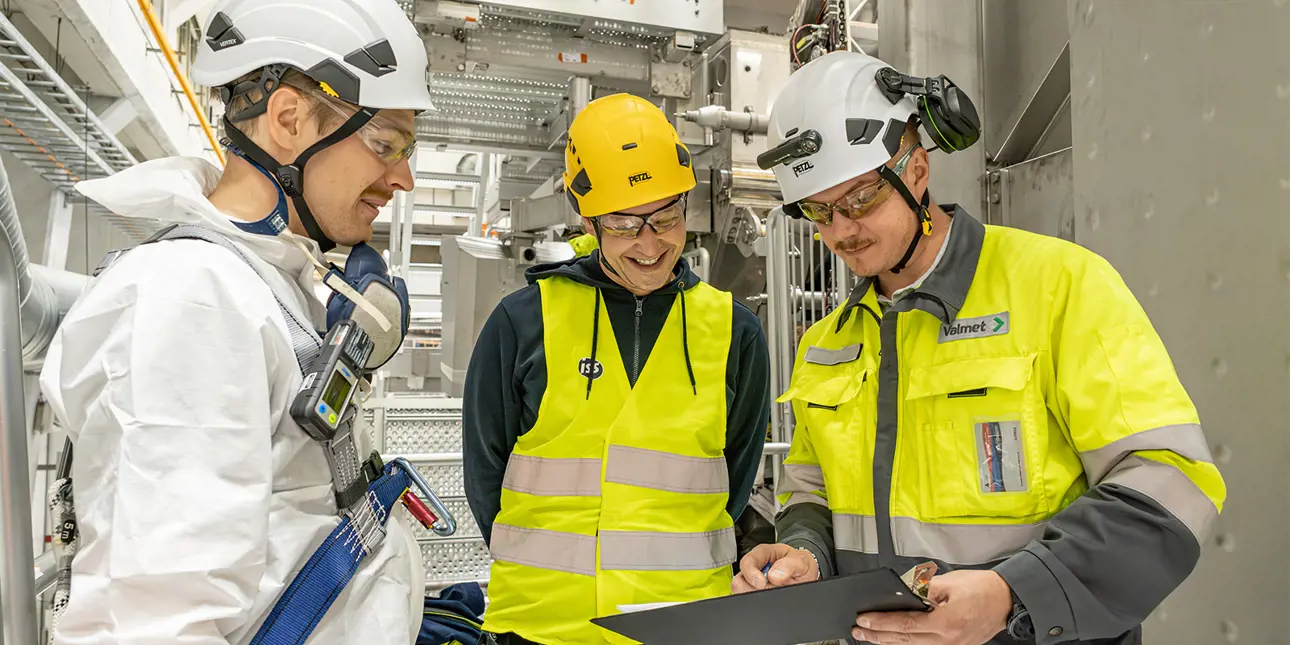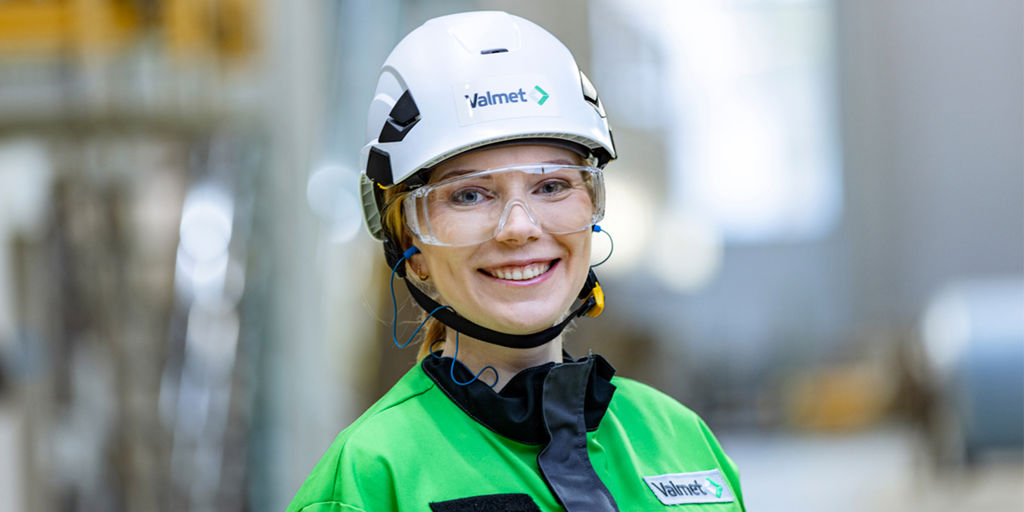Cultivating positive safety culture in the pulp and paper industry
By taking a collaborative approach to HSE, members of the pulp and paper industry can improve mill safety from the woodyard to the finishing section.

Authors: Kyle Wismer, HSE Manager, NA Field Services & Automation, and Nick Lising, Senior Manager, HSE at Valmet in North America
The pulp and paper industry has begun to take a renewed, collaborative approach to health, safety and environment (HSE) on the worksite. Many organizations are promoting an open dialogue between mills, original equipment manufacturers (OEMs) and contractors. Together, they are focusing on developing positive safety attitudes, skills and behaviors that go beyond occupational safety compliance and move toward a goal of zero harm. This goal demonstrates a deeper acknowledgment and understanding of situational risk, as well as meaningful adjustments to reduce it.
The organizations leading this initiative are making progress toward a positive safety culture by implementing new processes and behavior-based programs, as well as supporting others as they begin to renew their focus on site safety. With effective planning, commitment to common goals and rules, clear responsibilities, good coordination and open communication, partners across the pulp and paper industry can help ensure everyone on a worksite goes home healthy and safe.
Here are three ways that organizations across the pulp and paper industry can work together to maximize worksite safety.
-
Establishing expectations through HSE meetings
When beginning a new project, it’s easy to think about what needs to be done to complete the work. It takes a little more care and awareness to think about what needs to be done to complete the work safely. To cultivate a positive safety culture on the worksite, mills can hold HSE meetings and safety kickoffs for new projects and planned shutdowns. Such meetings can include employees, OEMs, contractors and other partners.
HSE meetings are examples of behavior-based safety programs. Behavior-based safety is a deliberate method of minimizing hazards and safety risks by predicting outcomes of behaviors, then proactively adjusting those behaviors to achieve a safer outcome. It is practiced by watching how people engage with or within a space, process or practice and making appropriate changes that improve safety. By taking the time to evaluate safety risks and hazards, teams are better prepared to work toward safer outcomes.
In addition to a kickoff, mills can hold daily HSE meetings throughout a project or shutdown’s duration. These discussions with OEMs and the contractors can help determine evolving hazards and develop ongoing risk-prevention strategies. This level of pre-work understanding can get everyone in a safety mindset each day and minimize risks through repetition. Even if some conversations start to feel redundant over time, it’s valuable to have them just in case anything has changed.
What can make HSE meetings so effective is communicating what’s personally at stake: Why do you work safely? Some folks think of their families, activities they enjoy doing outside of work or future goals. By personalizing the message, these meetings can make the understanding more impactful and people on the worksite more intentional.
If all parties participate in planning, commitment and responsibilities, there is a greater chance that procedures will go smoothly. Making these assessments and changes while establishing expectations can help improve the safety of the shutdown, future site safety and continued HSE conversations long after.
-
Hosting safety summits to establish safety expectations
Some mills are already working toward establishing positive safety cultures and seeking support from industry partners. These mills have hosted safety summits or conferences that include OEMs or contractors. During the summits, participants have necessary conversations about safety and how to improve it together. This allows everyone to provide their perspective, offer solutions, get by-in and gain an equal understanding that they can take to the worksite.
These summits can be a huge step to improve the safety conditions and culture at mill sites. Summits help mills develop and implement safety training and help everyone that enters a site better understand safety expectations. This level of awareness can remind personnel to keep safety top of mind and hold all parties accountable for the safety of one another.
It also improves collaboration by starting the safety conversation in a neutral way. It’s important that mills remain open when visiting contractors or OEMs express a safety concern, as they can help mills identify and mitigate hazards. Fixing these hazards can prevent accidents and help staff and visitors alike to feel safe on-site.
-
Automating high-risk manual processes
There are some areas and processes in a mill that have more obvious safety risks and hazards than others. While these areas and procedures may be made safer through behavior-based safety, sometimes automating manual tasks is the best accident prevention.
One example is smelt spout maintenance for recovery boilers. When manually cleaning deposits from smelt spouts, operators often come in close contact with such hazard as molten smelt, liquor and hot gases. Smelt spout robots put distance between operators and physical hazards, reducing safety risk.
For example, Valmet installed the first smelt spout robot in a North American mill in 2023. The robot performs the physical cleaning cycles, while operators program the cleaning sequence and maintain remote control. The robot is also equipped with an onboard camera so operators can evaluate performance and troubleshoot issues. In addition to improving safety, automated technology such as smelt robots can also improve efficiency and productivity, as well as free operators to focus on other priorities.

Improving mill success by improving mill safety
In recent years, mill safety is becoming more of a priority throughout entire organizations than ever before. While in the past, safety has been driven by compliance, that is shifting. Mills are taking a step beyond meeting standards and updating processes, integrating technology, providing training and implementing behavior-based safety programs. Going beyond just checking the box, the people in organizations want to make sure everyone is safe because they genuinely care.
While operational safety is invaluable and employee well-being is reason enough on its own to practice a positive safety culture, safety can also affect the overall success of a mill. Mills with a positive safety culture can benefit from greater productivity, reduced costs and better morale and staff retention. By preventing accidents, employees may miss fewer days of work, and companies can minimize incident-related costs. Companies that tend to have a stronger safety culture may also have less turnover and be more attractive to potential hires.
As organizations begin this work, it’s important to remember that implementing new processes at cultivating this kind of attention and behavioral change takes time. Mills can benefit from the positive safety culture of their OEMs and work with them to develop, implement and measure progress toward their own safety goals and create their own HSE policies. Together, members of the pulp and paper industry can make continual progress and help ensure everyone works — and goes home — safe.